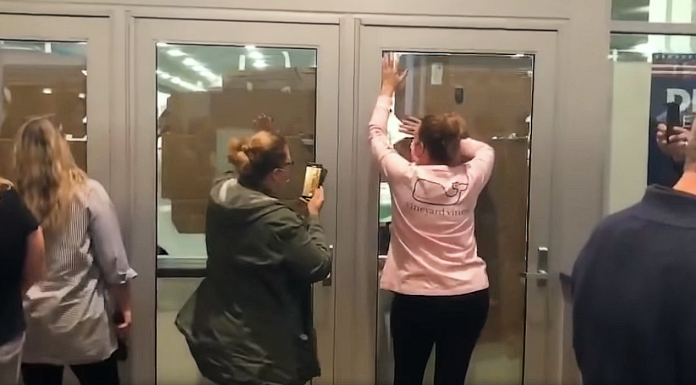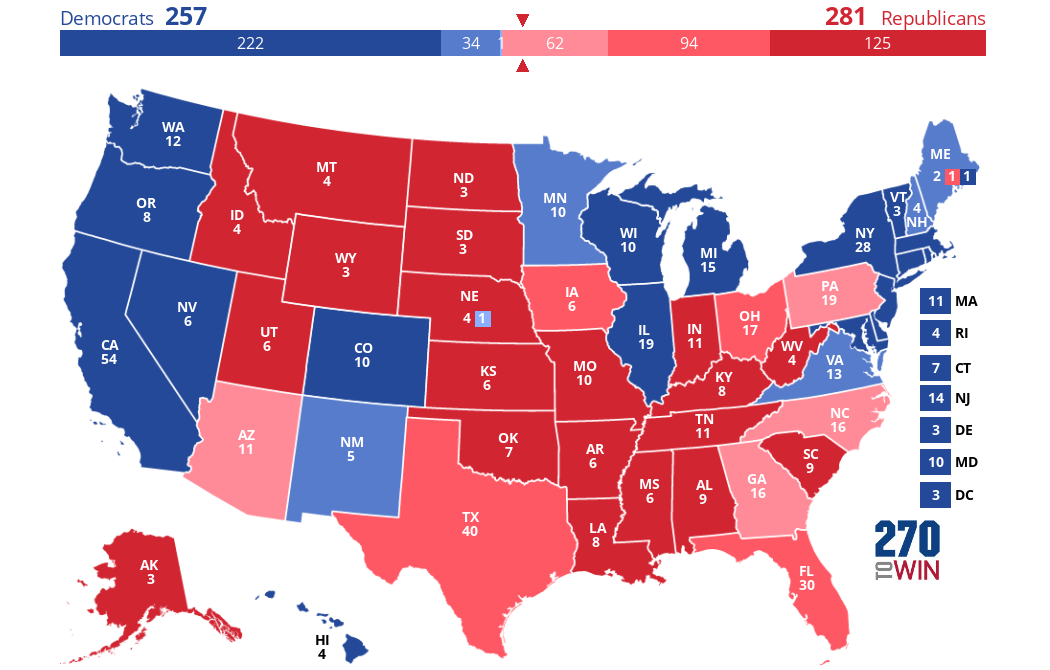(Jacob Bruns, Headline USA) With roughly 50 days to go before the Nov. 5 election, the New York Times was already warning Americans not to expect immediate results, the Post Millennial reported.
Calling to mind memories of the 2020 election and its long delays, particularly in the blue counties of key swing states, the Times suggested that the proliferation of mail-in ballots could cause ballot-counting to go well past election day, resulting in lengthy delays before a victor could be declared in the presidential election.
The 2020 election was not called until the Saturday after the election—a four-day delay—due to states such as Pennsylvania continuing to count ballots that were received after Election Day if postmarked on it.
In the 20 states that tracked it, Democrats received 8 million more mail-in votes than Republicans during the 2020 race, according to the Times report. President Joe Biden allegedly won the race by 7,059,529 votes.
Although then-President Donald Trump had a dominating lead in the Keystone State on Nov. 3, by the time all of the mail-in ballots were counted, Biden had reversed it.
While mainstream media projected similar delays in 2022, the commanding leads that then-Lt. Gov. John Fetterman and state Attorney General Josh Steiner had going into Election Day for their respective senatorial and gubernatorial races somehow assured that Pennsylvania officials could stop counting and declare their winners on the eve of the election.
Only in Arizona, where the races for governor and state attorney general showed potential victories for GOP candidates Kari Lake and Abe Hamadeh—despite significant irregularities, once again, in Maricopa County—was it necessary to delay the results for an additional 13 days.
Despite the inconsistencies and irregulatities, all of which uncannily favored Democrat candidates, Democratic election officials assured Times readers that they should trust the process, while also trying to move the goalpost as far as what the process should look like.
“I keep objecting to the term ‘delays,’” said Pennsylvania Secretary of State Al Schmidt.
The ballots will be counted “as expeditiously as possible, and counting votes takes time,” he claimed.
According to RealClearPolitics’s average, Trump—the GOP nominee once again—has a narrow 0.2% lead over Vice President Kamala Harris in Pennsylvania.
Based on the current projected leads in battleground states, Trump would win the Electoral College by 281 to 257.
In Arizona, where Trump currently holds a lead of 1.3%, Democrat Secretary of State Adrian Fontes claimed that those who wished to know election results on election day were simply “gaslighting.”
“[I]t’s nonsense, that’s absolute nonsense,” Fontes said. “We’ve always had 10 to 13 days till we saw some official results, and we’re still doing it that way.”
Although there were significant challenges and disputes to the outcome, which Biden allegedly won by the narrowest margin of any state, Arizona had projected him its 2020 winner by around 3:45 a.m. the day after the election, suggesting that Fontes was, in fact, gaslighting. Some networks—notably Fox News—controversially projected Biden the winner in Arizona before the polls had closed.
Even in battleground states where Harris was presently leading, Democrats were leaving nothing to chance this year after the lessons learned during the 2016 election. Prior to the implementation of the COVID-era mail-in-ballot policies, Trump that year surprised presumptive winner Hillary Clinton and her media allies in states including Wisconsin, Michigan and Pennsylvania.
“Wisconsin will not have full results on election night,” said Ann Jacobs, Democratic chair of the Wisconsin Election Board.
The state famously notoriously saw Biden take the lead after a 3 a.m. dump of mail-in ballots from Milwaukee appears to have broken almost exclusively for the Democrat candidate, reversing Trump’s 120,000 vote advantage with roughly 20,000 to spare.
🚨 Wisconsin — Did Anyone Get Arrested Yet?
Milwaukee Election Director, Claire Woodall-Vogg, who Suspiciously Came up with Ten’s of Thousands of Ballots She Got Employees to Fill Out in the 2020 Election, was been Terminated
🟤 THE SMOKING GUN 💨
• emails were uncovered of… pic.twitter.com/KTjdmpPTyl
— MJTruthUltra (@MJTruthUltra) August 9, 2024
In Michigan, Democrat Secretary of State Jocelyn Benson declared that “candidates don’t get to decide who wins elections, voters do.”
Still, Michigan, unlike Wisconsin or Pennsylvania, allows districts to begin processing mail-in ballots up to eight days before election day, meaning that the results will likely be more timely, if still unreliable.
Benson, one of several secretaries of state to have received training and funding from George Soros, added that elections in Michigan were totally unbiased, thanks to “our professional elected officials” who will be “working to transmit as quickly and efficiently as possible.”
Headline USA’s Ben Sellers contributed to this report.


